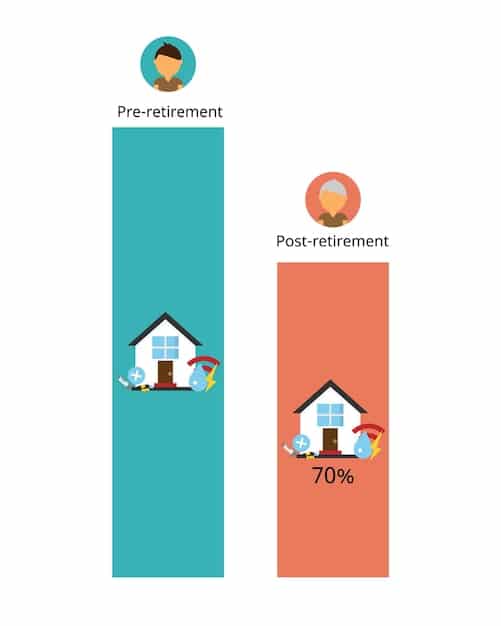US Healthcare Regulations in 2025: A Complete Guide

Decoding the Latest Changes to US Healthcare Regulations: A 2025 Guide offers a comprehensive overview of anticipated shifts in policy, coverage, and access, equipping individuals and healthcare professionals with the knowledge to navigate the evolving landscape.
Navigating the intricacies of the American healthcare system can be challenging, especially with the ever-changing landscape of regulations. This guide, Decoding the Latest Changes to US Healthcare Regulations: A 2025 Guide, aims to provide a clear and concise overview of the key changes expected in 2025, helping individuals, families, and healthcare professionals stay informed and prepared.
understanding the affordable care act (aca) and its future
The Affordable Care Act (ACA) has been a cornerstone of US healthcare for over a decade. Understanding its current status and potential future modifications is crucial for anticipating the changes in US Healthcare Regulations.
The ACA aimed to expand health insurance coverage, lower healthcare costs, and improve the quality of care. While it has achieved significant milestones, it has also faced numerous challenges and political debates.
key provisions of the aca
The ACA includes several key provisions that have reshaped the healthcare landscape. These include:
- Individual Mandate: Requiring most individuals to have health insurance or face a penalty (though this penalty has since been repealed).
- Expansion of Medicaid: Providing federal funding to states that expand Medicaid eligibility to cover more low-income adults.
- Health Insurance Marketplaces: Creating online marketplaces where individuals and small businesses can purchase health insurance plans.
- Guaranteed Issue and Renewability: Prohibiting insurance companies from denying coverage or charging higher premiums based on pre-existing conditions.

The future of the ACA remains uncertain, with ongoing legal challenges and political debates. However, it is likely to continue to play a significant role in shaping the US healthcare system in the years to come. Monitoring these developments is essential for understanding the broader context of healthcare regulations.
In summary, the Affordable Care Act remains a core pillar of the US healthcare system, with potential adjustments on the horizon that could significantly impact coverage and access. Keeping abreast of these developments is vital for all stakeholders in healthcare.
medicare and medicaid: changes on the horizon
Medicare and Medicaid are two of the largest healthcare programs in the United States, providing coverage to millions of Americans. Both programs are subject to regulatory changes and legislative updates that can impact their beneficiaries and providers.
Understanding the potential changes to these programs is essential for healthcare professionals, policymakers, and individuals who rely on them for their healthcare needs.
potential changes to medicare
Medicare, the federal health insurance program for people aged 65 or older and certain younger people with disabilities, faces several potential changes in the coming years. These include:
Drug Price Negotiations: The Inflation Reduction Act of 2022 allows Medicare to negotiate prices for some prescription drugs, starting in 2026. This could lower drug costs for beneficiaries but may also impact pharmaceutical companies’ research and development efforts.
Expansion of Telehealth Services: The COVID-19 pandemic led to a temporary expansion of telehealth services covered by Medicare. There is ongoing debate about whether to make these changes permanent, which could improve access to care for beneficiaries in rural areas.
Medicaid, the joint federal-state program that provides healthcare coverage to low-income individuals and families, also faces potential changes. One key area of focus is:
- Medicaid Expansion: While the ACA encouraged states to expand Medicaid eligibility, some states have not yet done so. The federal government may explore ways to incentivize or require remaining states to expand their programs.
- Managed Care: Many states are increasingly relying on managed care organizations to deliver Medicaid services. This trend is likely to continue, with potential implications for quality of care and cost control.
Staying informed about these potential changes is crucial for ensuring that Medicare and Medicaid continue to meet the needs of their beneficiaries and providers.
Ultimately, both Medicare and Medicaid are evolving programs, and the changes on the horizon are poised to shape the future of healthcare access and affordability for millions of Americans. Monitoring these developments is critical for beneficiaries and healthcare providers alike.
the impact of technology on healthcare regulations
Technology is rapidly transforming the healthcare industry, from electronic health records (EHRs) to telehealth and artificial intelligence (AI). These advancements have significant implications for healthcare regulations, raising new questions about data privacy, security, and liability.
As technology continues to evolve, policymakers will need to adapt regulations to ensure that these innovations are used safely, ethically, and effectively.

key technological trends driving regulatory change
Several key technological trends are driving the need for regulatory changes in healthcare. These include:
Telehealth: The increasing use of telehealth raises questions about licensure, reimbursement, and quality of care. Regulators are working to establish clear guidelines for telehealth services to ensure that patients receive appropriate care regardless of location.
Artificial Intelligence (AI): AI is being used in healthcare for a variety of purposes, including diagnosis, treatment planning, and drug discovery. However, the use of AI also raises concerns about bias, transparency, and accountability.
The integration of technology into healthcare requires careful consideration of both its potential benefits and potential risks. Policymakers must strike a balance between fostering innovation and protecting patients’ rights and safety.
In conclusion, technology’s growing influence in healthcare necessitates regulatory adjustments to address issues like telehealth standards, AI ethics, and data privacy. Navigating these challenges is crucial for harnessing the benefits of technology while safeguarding patient well-being.
cybersecurity and data privacy in healthcare
The healthcare industry is a prime target for cyberattacks, as it holds vast amounts of sensitive patient data. Protecting this data from breaches and misuse is a critical regulatory priority.
Healthcare organizations must comply with a variety of regulations, including the Health Insurance Portability and Accountability Act (HIPAA), to ensure the privacy and security of patient information.
hipaa and beyond: data protection regulations
HIPAA establishes national standards for the protection of protected health information (PHI). Key provisions of HIPAA include:
- Privacy Rule: Sets standards for the use and disclosure of PHI.
- Security Rule: Requires healthcare organizations to implement administrative, physical, and technical safeguards to protect electronic PHI.
- Breach Notification Rule: Requires healthcare organizations to notify affected individuals and the Department of Health and Human Services (HHS) in the event of a data breach.
Beyond HIPAA, other regulations, such as the California Consumer Privacy Act (CCPA) and the European Union’s General Data Protection Regulation (GDPR), may also apply to healthcare organizations that collect or process data from individuals in those jurisdictions.
Cybersecurity threats are constantly evolving, and healthcare organizations must stay vigilant to protect patient data from breaches. This requires ongoing efforts to improve cybersecurity practices, train employees, and implement robust security measures.
In summary, safeguarding patient data through stringent cybersecurity measures and compliance with regulations like HIPAA is paramount. Healthcare organizations must continuously adapt their defenses to stay ahead of evolving cyber threats and protect sensitive information.
the role of health insurance companies
Health insurance companies play a central role in the US healthcare system, providing coverage to millions of Americans. The regulatory environment for health insurance companies is complex and constantly evolving.
Understanding the role of health insurance companies and the regulations that govern them is essential for navigating the healthcare system.
key regulations impacting health insurers
Several key regulations impact health insurance companies. These include:
The Affordable Care Act (ACA): The ACA includes numerous provisions that affect health insurance companies, such as the guaranteed issue requirement and the essential health benefits requirement.
State Insurance Regulations: States have the primary responsibility for regulating health insurance companies operating within their borders. These regulations cover a wide range of issues, including licensing, solvency, and consumer protection.
Health insurance companies are subject to ongoing regulatory scrutiny to ensure that they are providing affordable, accessible, and high-quality coverage to their members.
In essence, health insurance companies are crucial intermediaries in the US healthcare system, and their operations are heavily influenced by federal and state regulations. Ongoing oversight is essential to ensure they provide fair, affordable, and quality coverage to their members.
access to care and health equity
Ensuring access to care and promoting health equity are critical goals of US healthcare policy. However, significant disparities in access to care and health outcomes persist across different populations.
Addressing these disparities requires a multifaceted approach that includes policies to expand coverage, improve access to care, and address social determinants of health.
policies to promote access and equity
Several policies can help promote access to care and health equity. These include:
- Expanding Medicaid: Medicaid expansion can provide coverage to millions of low-income individuals and families, improving their access to care.
- Investing in Community Health Centers: Community health centers provide primary care services to underserved populations, regardless of their ability to pay.
- Addressing Social Determinants of Health: Social determinants of health, such as poverty, housing, and education, can have a significant impact on health outcomes. Policies that address these factors can help improve health equity.
Achieving health equity requires a sustained commitment to addressing the root causes of disparities and ensuring that all Americans have the opportunity to live healthy lives.
In conclusion, promoting access to care and achieving health equity are paramount goals in US healthcare. Addressing disparities requires comprehensive strategies encompassing expanded coverage, community health investments, and initiatives targeting social determinants of health to ensure healthier lives for all Americans.
| Key Point | Brief Description |
|---|---|
| 💡 ACA Future | Ongoing debates and legal challenges impact its provisions. |
| 💊 Drug Prices | Medicare’s negotiation may lower costs, affecting research. |
| 💻 Telehealth | Expansion could improve care access, debates on permanence. |
| 🔒 Data Privacy | HIPAA and evolving cyber threats require vigilance. |
frequently asked questions
▼
The future of the ACA depends on political and legal challenges. Potential changes include adjustments to subsidies, essential health benefits, and the individual mandate. These changes could impact coverage and affordability.
▼
Medicare drug price negotiations, starting in 2026, aim to lower prescription costs for beneficiaries. This could lead to significant savings for seniors and those with disabilities who rely on these medications.
▼
Technology advancements require updated regulations to safeguard data privacy, ensure ethical AI use, and set standards for telehealth services. These regulations balance innovation with patient protection and equitable access to care.
▼
Data privacy regulations are evolving to address the growing threat of cyberattacks. Compliance with HIPAA and other laws is crucial for protecting patient data. Regular updates and robust security measures are essential.
▼
Strategies for promoting health equity include expanding Medicaid, investing in community health centers, and addressing social determinants of health like poverty and housing. These efforts enhance access to care and improve health outcomes for underserved populations.
conclusion
Staying informed about the latest changes to US healthcare regulations is crucial for individuals, healthcare professionals, and policymakers alike. By understanding the key trends and challenges facing the healthcare system, we can work together to ensure that all Americans have access to affordable, high-quality care.





